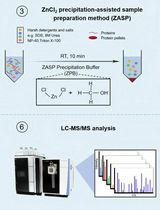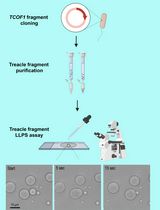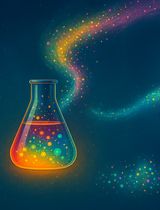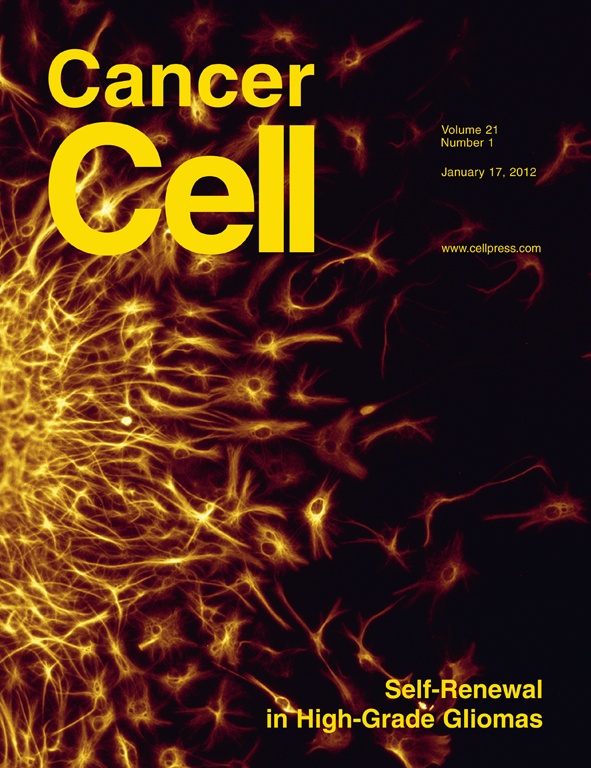- Submit a Protocol
- Receive Our Alerts
- Log in
- /
- Sign up
- My Bio Page
- Edit My Profile
- Change Password
- Log Out
- EN
- EN - English
- CN - 中文
- Protocols
- Articles and Issues
- For Authors
- About
- Become a Reviewer
- EN - English
- CN - 中文
- Home
- Protocols
- Articles and Issues
- For Authors
- About
- Become a Reviewer
Purification of His-ubiquitin Proteins from Mammalian Cells
Published: Vol 2, Iss 17, Sep 5, 2012 DOI: 10.21769/BioProtoc.258 Views: 22437

Protocol Collections
Comprehensive collections of detailed, peer-reviewed protocols focusing on specific topics
Related protocols

ZnCl2 Precipitation-Assisted Sample Preparation for Proteomic Analysis
Qiqing He [...] Fuchu He
Jul 20, 2025 2683 Views

Protocol for the Preparation of a Recombinant Treacle Fragment for Liquid–Liquid Phase Separation (LLPS) Assays
Nadezhda V. Petrova [...] Artem K. Velichko
Sep 20, 2025 1778 Views

Optimized Secretome Sample Preparation From High Volume Cell Culture Media for LC–MS/MS Proteomic Analysis
Basil Baby Mattamana [...] Peter Allen Faull
Dec 20, 2025 1088 Views
Abstract
This protocol is used to purify His-tag ubiquitin conjugated protein. In this particular case, cells were transfected with His-tag ubiquitin and p53 which allowed us to purify using His-tag and reveal the WB using antibodies against p53 to see just the p53-ubiquitinate. The present protocol can be used in general for His-tag proteins expressed in mammalian cells.
Materials and Reagents
- EDTA free protease inhibitors (F. Hoffmann-La Roche, catalog number: 05892988001 )
- Proteasome inhibitor MG-132 (Calbiochem®, catalog number: 474790-5MG )
- Phosphate buffered saline (PBS)
- Tris
- Ni-NTA-Agarose beads (QIAGEN, catalog number: 30210 )
- Urea
- Guanidinium-HCl ( Sigma-Aldrich, catalog number: G4505-25G )
- Imidazole (Sigma-Aldrich, catalog number: 12399 )
- Triton X-100
- Glycerol
- β-mercaptoethanol
- SDS
- Bromophenol blue
- Lysis buffer (see Recipes)
- Wash buffer (see Recipes)
- Elution buffer (see Recipes)
- 4x laemmeli buffer (see Recipes)
Equipment
- Centrifuges
- Sonicator
- Western blotting equipment
- Tissue culture plates
- 1.5 ml eppendorf tube
- 15 ml falcon tube
Procedure
- Seed 1 x 106 cells on 10 cm tissue culture plates.
- After 8-12 h (around 40% of confluency) cells were transfect with 0.8 μg of plasmid for the His tag protein.
- 4 h before stop the culture add proteasome inhibitor MG-132 to a final concentration of 25 μM.
- 48 h after transfection aspirate the medium and wash the cells twice with pre-chilled PBS (cell can be keeping freezing on the plates at -80 °C until the day of the purification).
- Scrape cell with 1 ml of lysis buffer and transfer it in 1.5 ml eppendorf tube.
- Sonicate cells on ice twice for 10 sec with 1 min break (the sonicator probe should go under the lysate surface to avoid foaming but taking care do not touch the walls of the eppendorf tube).
- Spin cells 10 min at 11,000 rpm at 4 °C.
- Transfer the supernant in to 15 ml falcon tube and add 4 ml more of lysis buffer.
- Add 75 μl of Ni2+-NTA-agarose beads pre-equilibrate with lysis buffer (take 150 μl of Ni2+-NTA-agarose bead and spin 2 min at 4,000 rpm, discard the supernant and wash with 150 μl of lysis buffer four times, last time add 75 μl of lysis buffer and use).
- Incubate for 4 h at RT with gently agitation.
- Wash the beads at RT incubating 5 min with the following buffers:
- Once in lysis buffer.
- Once in wash buffer.
- Twice in wash buffer plus 0.1% Triton X-100 (spin 2 min at 4,000 rpm each time to recover the beads).
- Once in lysis buffer.
- Elute products by incubating beads in 75 μl of elution buffer for 20 min at RT with gentle agitation.
- Spin the beads and transfer supernant in to an eppendorf.
- Add 4x laemmeli buffer and boil for western blot analysis.
Recipes
- Lysis buffer
6 M guanidinium-HCl
0.1 M Na2HPO4/NaH2PO4
10 mM Tris-HCl (pH 8)
0.005 M imidazol
0.01 M β-mercaptoethanol
- Wash Buffer
8 M urea
0.1 M Na2HPO4/NaH2PO4
10 mM Tris-HCl (pH 6.8)
0.005 M imidazol
0.01 M β-mercaptoethanol
- Elution buffer
0.2 M imidazol
0.15 M Tris-HCl (pH 6.8)
30% glycerol
0.72 M β-mercaptoethanol
5% SDS
- 4x laemmeli buffer
2 ml 1 M Tris-HCl (pH 6.8)
4.0 ml 20% (w/v) SDS
4.0 ml glycerol
4 mg bromophenol blue
0.2 ml 14.3 M β-mercaptoethanol
Acknowledgments
This protocol was adapted from Gajjar et al. (2012). This work was supported by INSERM, La Ligue Contre le Cancer, and RECAMO CZ.1.05/2.1.00/03.0101. M.M.C. was supported by JSPS, AXA Research Fund, and Fundacao para a Ciencia e Tecnologia of Portugal. M.G. was supported by a research fellowship from Indo-French Centre for the Promotion of Advanced Research (IFCPAR) and from the ARC.
References
- Gajjar, M., Candeias, M. M., Malbert-Colas, L., Mazars, A., Fujita, J., Olivares-Illana, V. and Fahraeus, R. (2012). The p53 mRNA-Mdm2 interaction controls Mdm2 nuclear trafficking and is required for p53 activation following DNA damage. Cancer Cell 21(1): 25-35.
- Xirodimas, D., Saville, M. K., Edling, C., Lane, D. P. and Lain, S. (2001). Different effects of p14ARF on the levels of ubiquitinated p53 and Mdm2 in vivo. Oncogene 20(36): 4972-4983.
Article Information
Copyright
© 2012 The Authors; exclusive licensee Bio-protocol LLC.
How to cite
Illana, V. O. and Farhaeus, R. (2012). Purification of His-ubiquitin Proteins from Mammalian Cells. Bio-protocol 2(17): e258. DOI: 10.21769/BioProtoc.258.
Category
Biochemistry > Protein > Isolation and purification
Do you have any questions about this protocol?
Post your question to gather feedback from the community. We will also invite the authors of this article to respond.
Share
Bluesky
X
Copy link








